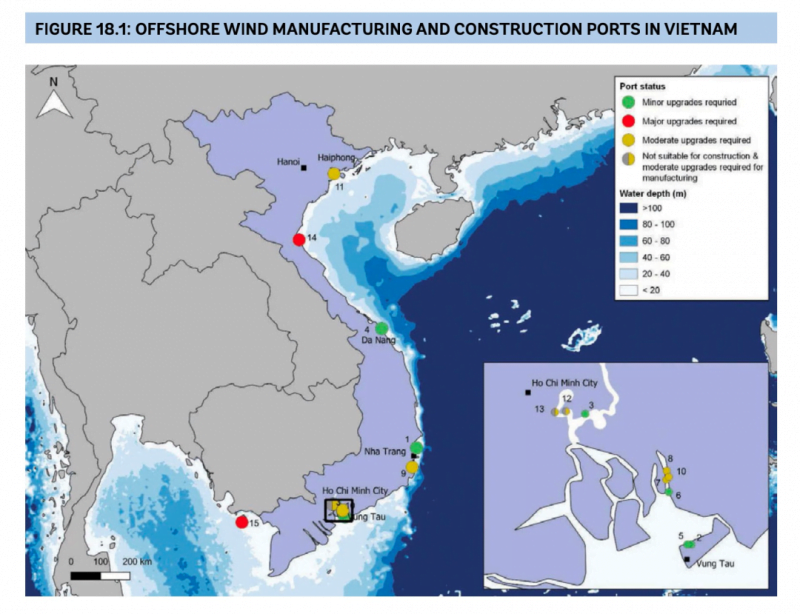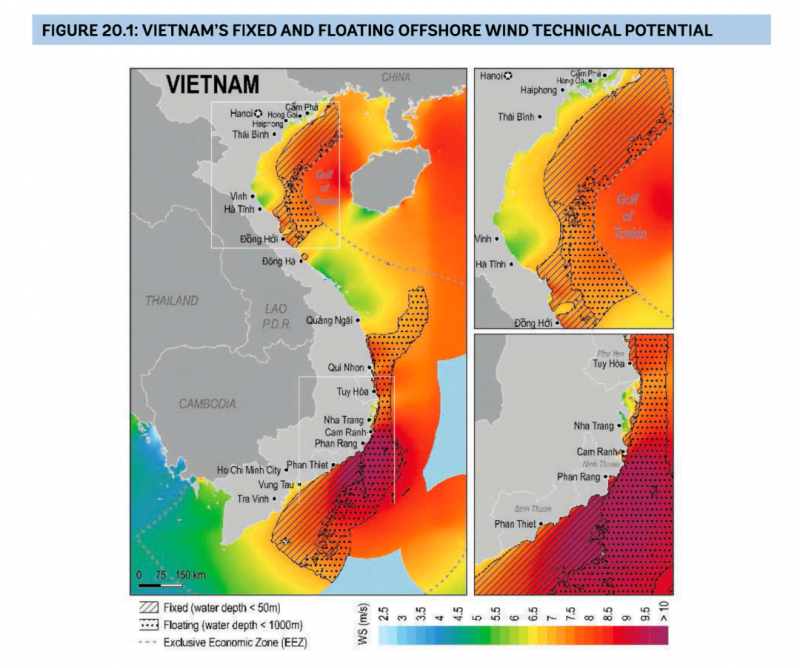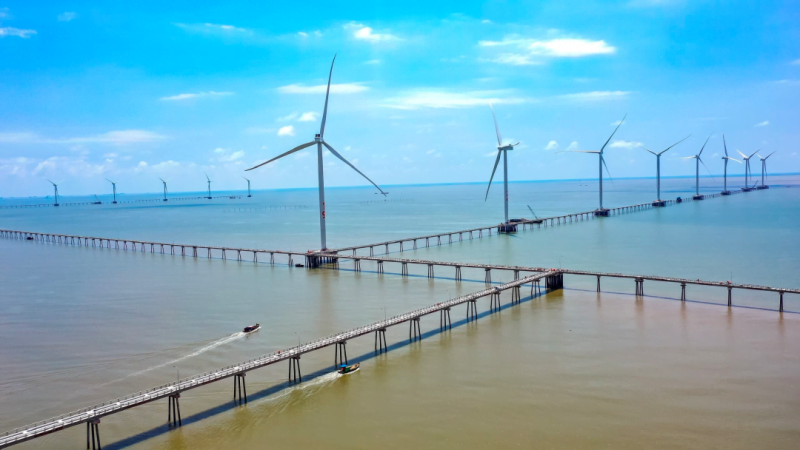Among ASEAN countries, Vietnam is already a leader in wind power generation and renewable energy applications. Vietnam has made significant progress in renewable energy, especially wind energy, following the 2050 goal of net-zero emissions set in November last year. In 2021, Vietnam’s installed wind power capacity will be nearly 4GW. As of October 2021, about 105 projects were under construction (5.72GW) and 12 projects were already in operation (582MW).
Vietnam has unique natural conditions for developing offshore wind power: more than 3,000 kilometers of coastline, with an annual average wind speed of 6 m/s (up to 10 m/s in the southeastern provinces of Binh Thuan and Ninh Thuan). Vietnam’s coastal province in the Mekong Delta region is one of four key economic regions and a key location for wind projects.

To avoid large-scale energy shortages, the Vietnamese government has drawn up the draft Eighth National Power Development Plan (PDP 8), aiming to attract up to US$128 billion in renewable energy investment by 2030, including a US$32 billion grid Infrastructure investment. Energy Box predicts that PDP8 will be released in May, and according to the latest draft plan, its wind energy target is 14-24 GW of onshore wind power and 7-8 GW of offshore wind power by 2030.

At the request of the Vietnamese government, the World Bank completed the report “Vietnam’s Offshore Wind Power Development Roadmap” report. According to its forecast, Vietnam’s offshore wind power potential is as high as 475GW. In contrast, as a leader in wind power generation, Germany currently has 62GW of wind power installed, of which only 8GW of offshore wind power. The report states that by 2035, Vietnam will have about 450 large-scale offshore wind turbines installed in about 10 fixed-base offshore wind farms and one or two floating-base wind farms.
In addition, due to the risks associated with new markets and the lack of local supply chain capacity, the energy costs of the first offshore wind projects are relatively high, estimated at $150-200 per MWh. Energy costs will drop rapidly as more projects begin, risks are reduced and local capacity is increased. This cost could fall to $80-90 per MWh in 2030 and $60-70 per MWh in 2035.

Vietnam’s growth in the wind energy sector is largely due to the government’s feed-in tariffs (FiTs). Since 2018, the government has provided subsidies of 8.5 cents/kWh (1.927 VND) for onshore wind power projects and 9.8 cents/kWh (2.223 VND) for offshore wind power projects, based on a 20-year purchase price. Electrical Agreement (PPA). This applies to all projects started before November 2021.
Most onshore wind projects have been delayed due to the impact of the Covid-19 pandemic, so the government has extended the FiT deadline from 2021 to the end of 2023 to reduce the financial risk of wind projects commissioned before the new deadline.
Following the expiry of the Fiji tax rate, Vietnam’s Ministry of Industry and Trade (MoIT) has proposed a bidding system similar to that used for solar power projects from 2023. It offers two options: an auction between developers to sell the power to a local dealer, or an auction between investors to start construction projects on the land it has acquired.



